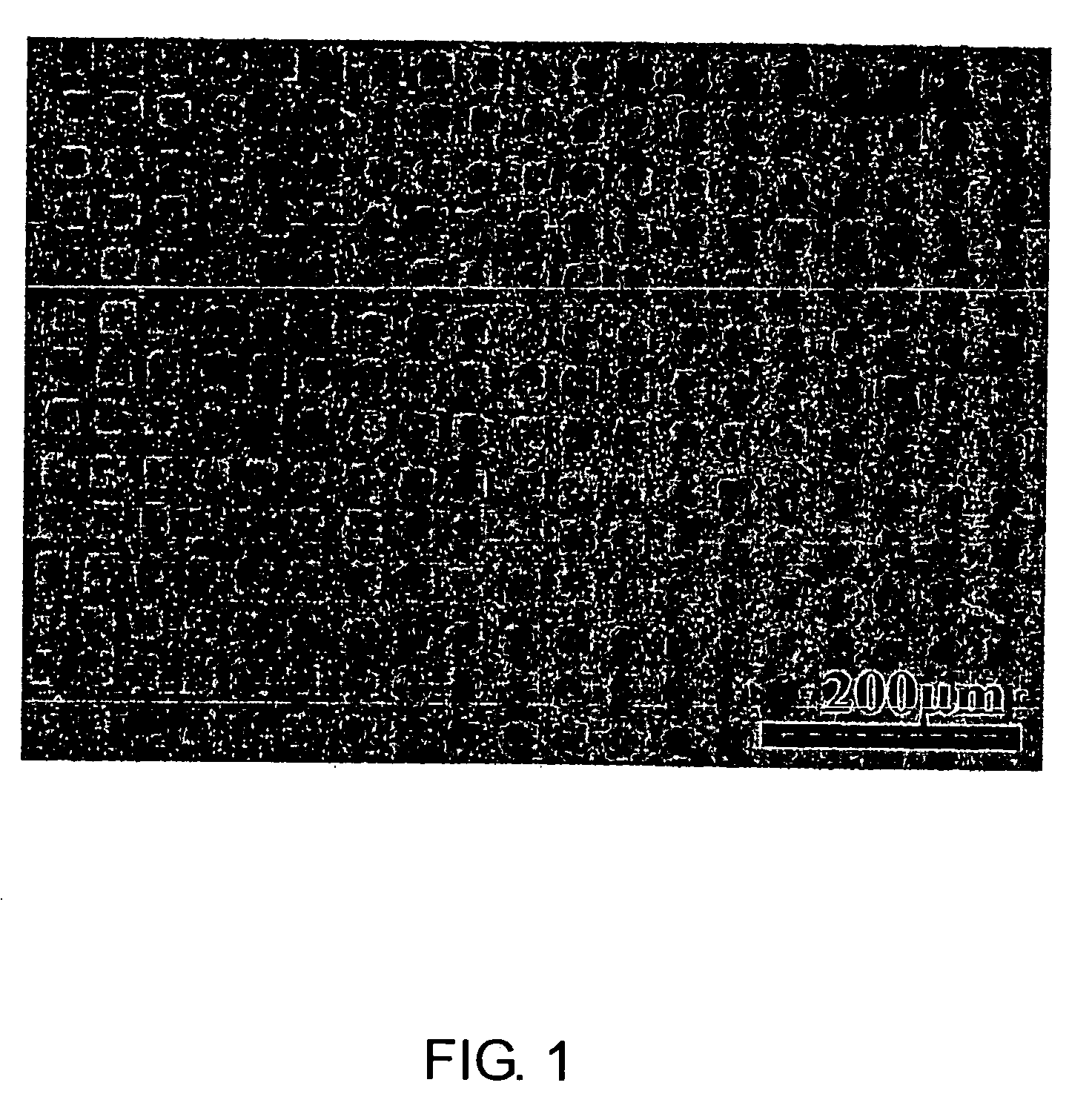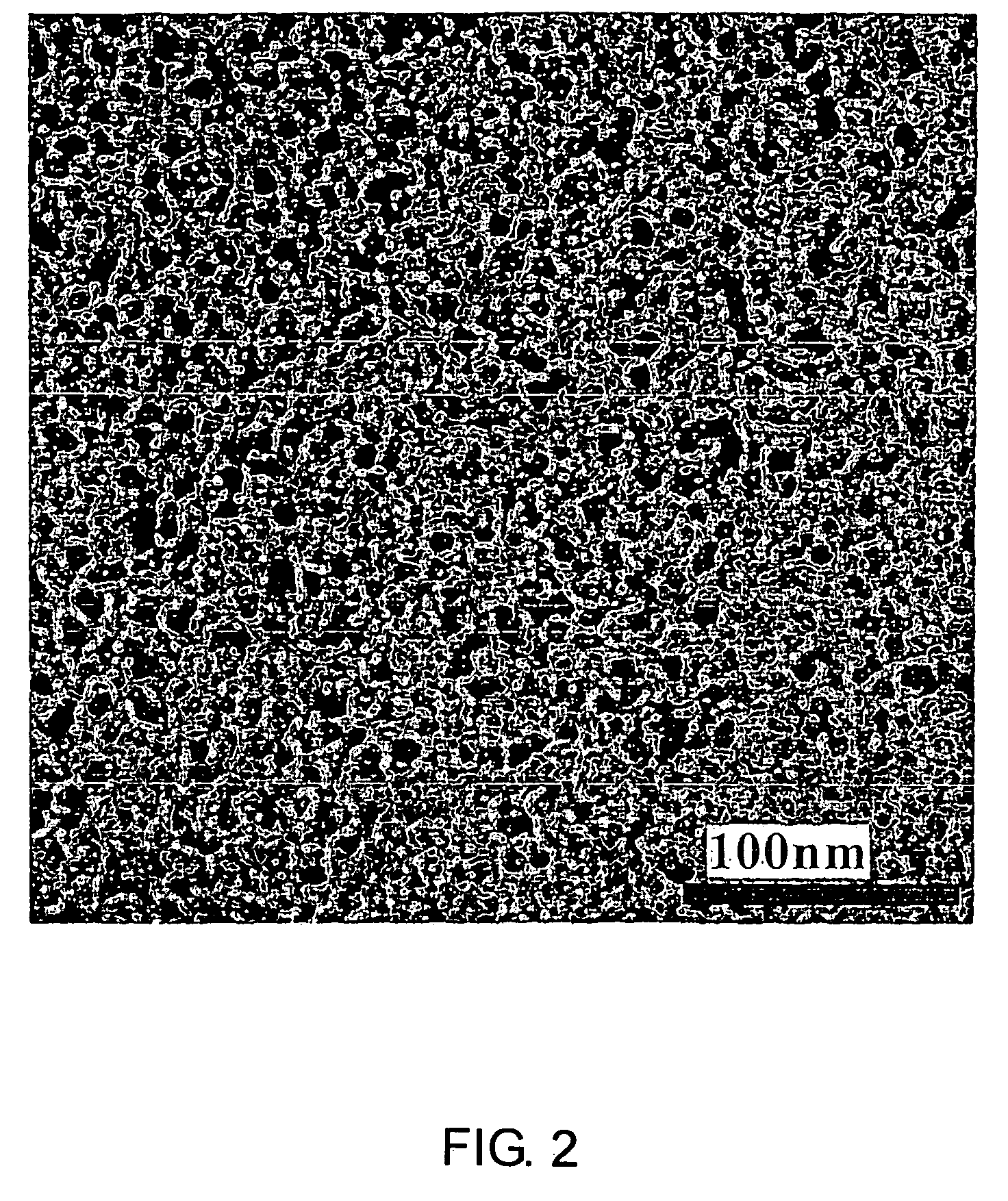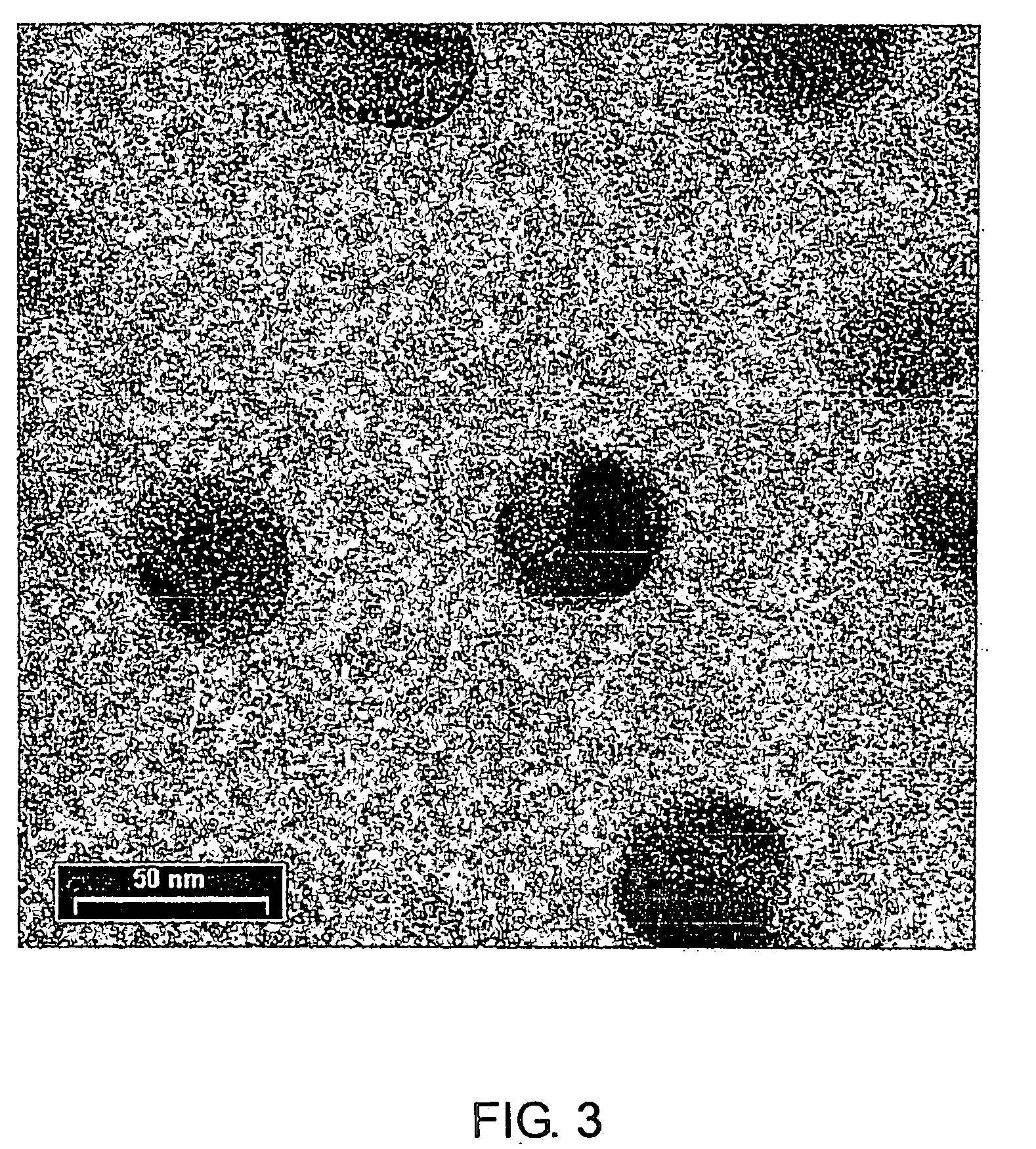Method for producing poly(methyl methacrylate)-metal cluster composite
- Summary
- Abstract
- Description
- Claims
- Application Information
AI Technical Summary
Benefits of technology
Problems solved by technology
Method used
Image
Examples
example 1
[0042] A poly(methyl methacrylate) (PMMA) film on which a metal mesh having a large number of holes of 5-μm-square had been placed as a mask was irradiated with ultraviolet ray (containing wavelength of 250 nm to 350 nm) of 1.9 J / cm2 by means of a mercury lamp. After removal of the mask, the film and palladium(II) acetylacetonate were placed in a glass tube and, under a nitrogen atmosphere, the glass tube was immersed in an oil bath at 180° C. for 15 minutes. The palladium(II) acetylacetonate sublimed and diffused inside the PMMA film. Since the portion exposed to ultraviolet ray strongly reduced the metal complex, a pattern of metal nanoparticles was obtained in accordance with the pattern of the metal mesh used as the mask. When the film was observed by a back scattering mode on a scanning electron microscope (SEM), the portion where the metal was formed strongly scattered an electron beam and hence afforded a bright contrast, so that it was confirmed that the pattern of the photo...
example 2
[0044] When vapor of cobalt(II) acetylacetonate and the PMMA film were placed under a nitrogen atmosphere at 180° C. for 30 minutes in the same manner as in Example 1, except that palladium(II) acetylacetonate was replaced with the cobalt complex, a micropattern of cobalt fine particles was obtained as in the case of palladium. It was confirmed by TEM observation that a large number of cobalt fine particles having a diameter of about 10 nm were dispersed in PMMA irradiated with the light.
example 3
[0045] When vapor of copper(II) acetylacetonate and the PMMA film were placed under a nitrogen atmosphere at 180° C. for 30 minutes in the same manner as in Example 1, except that palladium(II) acetylacetonate was replaced with the copper complex, a micropattern of copper fine particles was obtained as in the case of palladium. It was confirmed by TEM observation that a large number of cobalt fine particles having a diameter of about 50 nm were dispersed in PMMA irradiated with the light (FIG. 3).
PUM
| Property | Measurement | Unit |
|---|---|---|
| Temperature | aaaaa | aaaaa |
| Glass transition temperature | aaaaa | aaaaa |
Abstract
Description
Claims
Application Information
 Login to view more
Login to view more - R&D Engineer
- R&D Manager
- IP Professional
- Industry Leading Data Capabilities
- Powerful AI technology
- Patent DNA Extraction
Browse by: Latest US Patents, China's latest patents, Technical Efficacy Thesaurus, Application Domain, Technology Topic.
© 2024 PatSnap. All rights reserved.Legal|Privacy policy|Modern Slavery Act Transparency Statement|Sitemap



